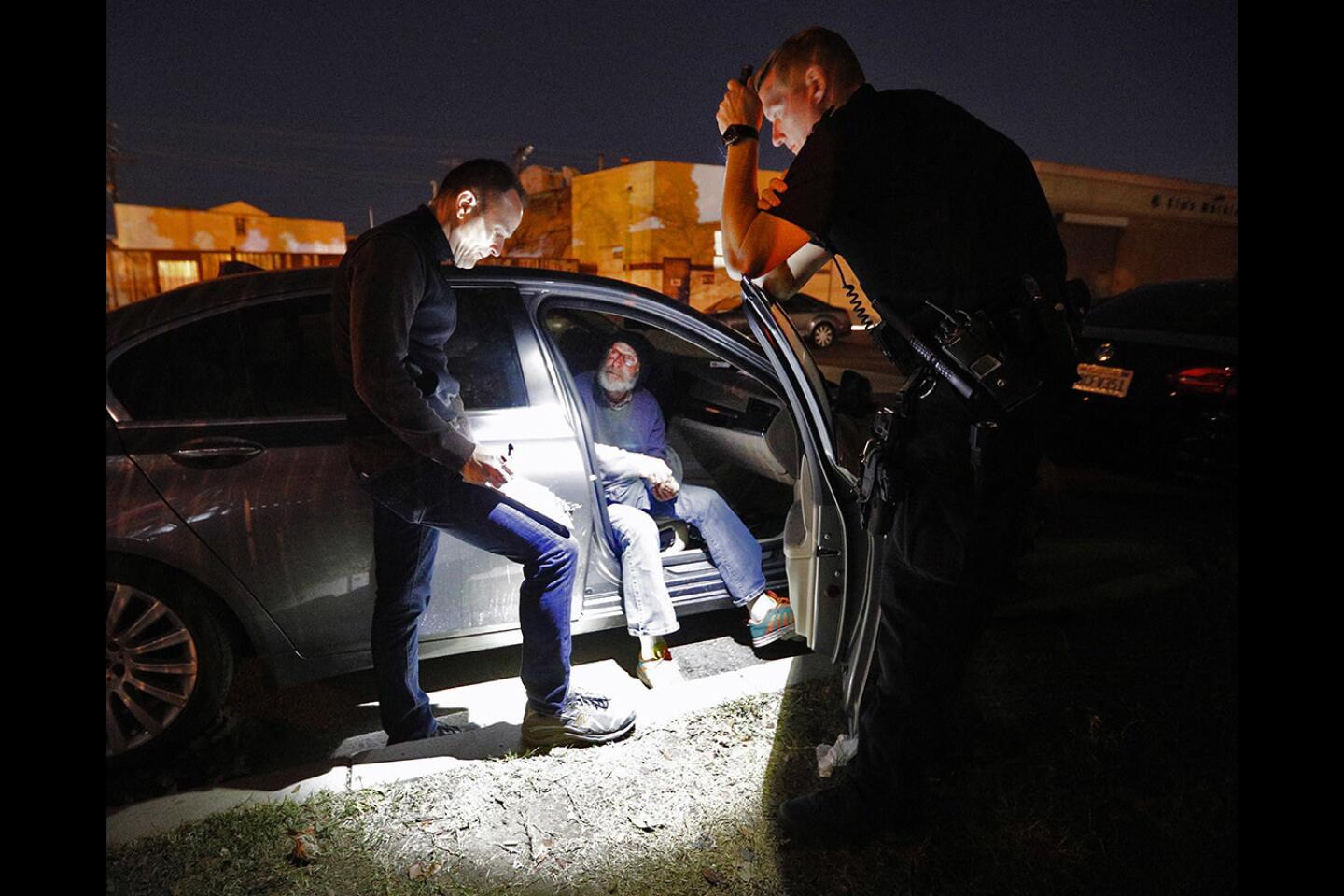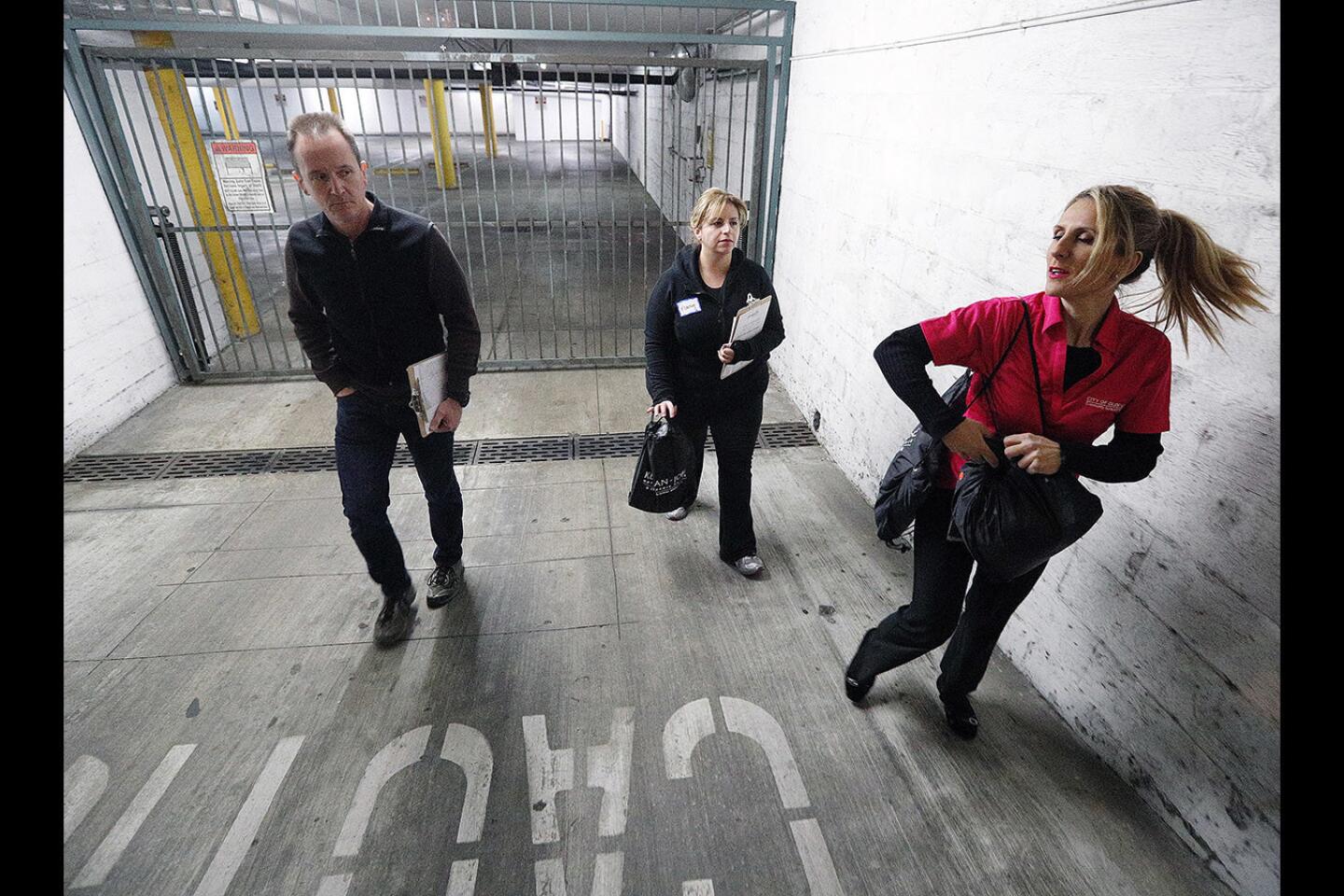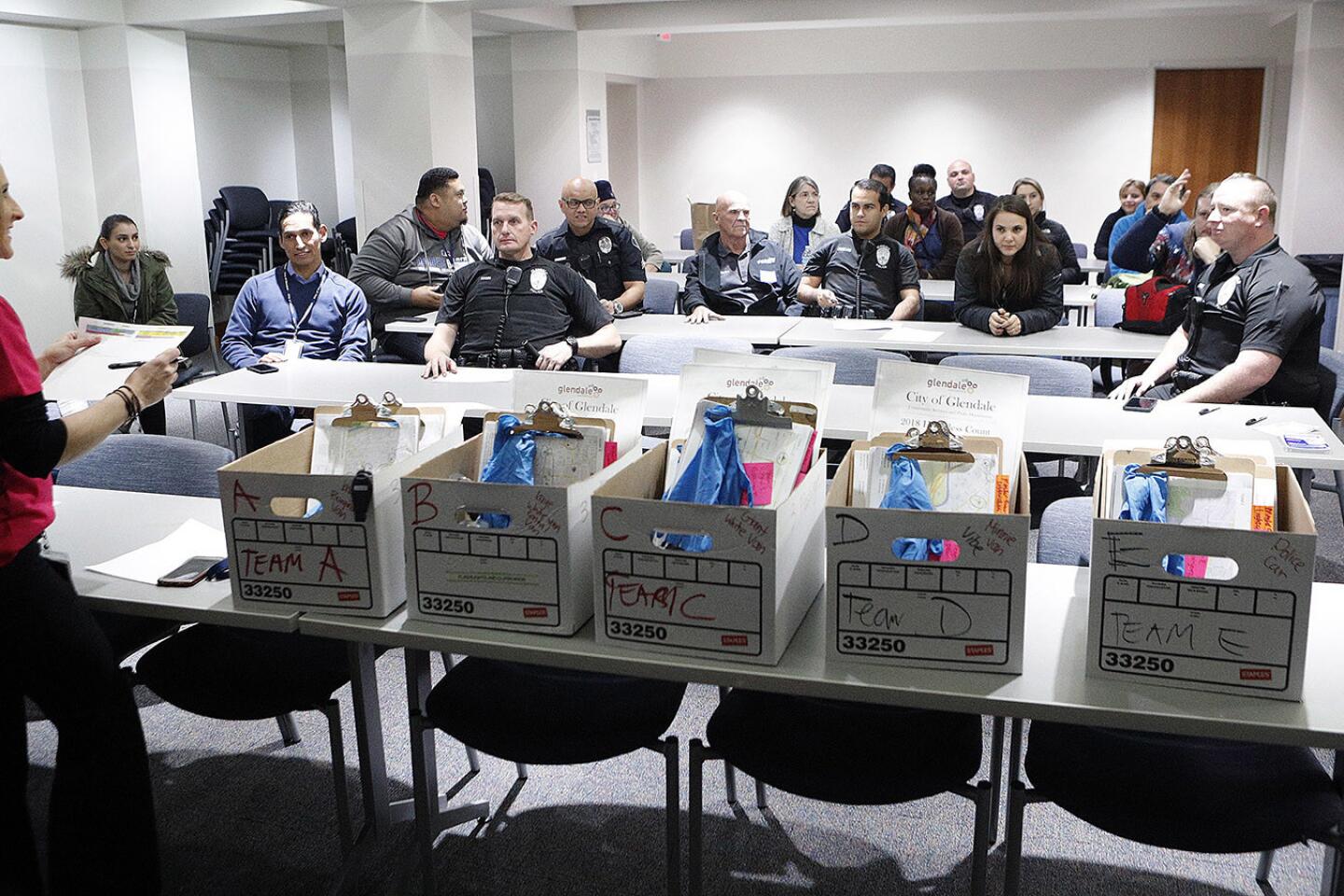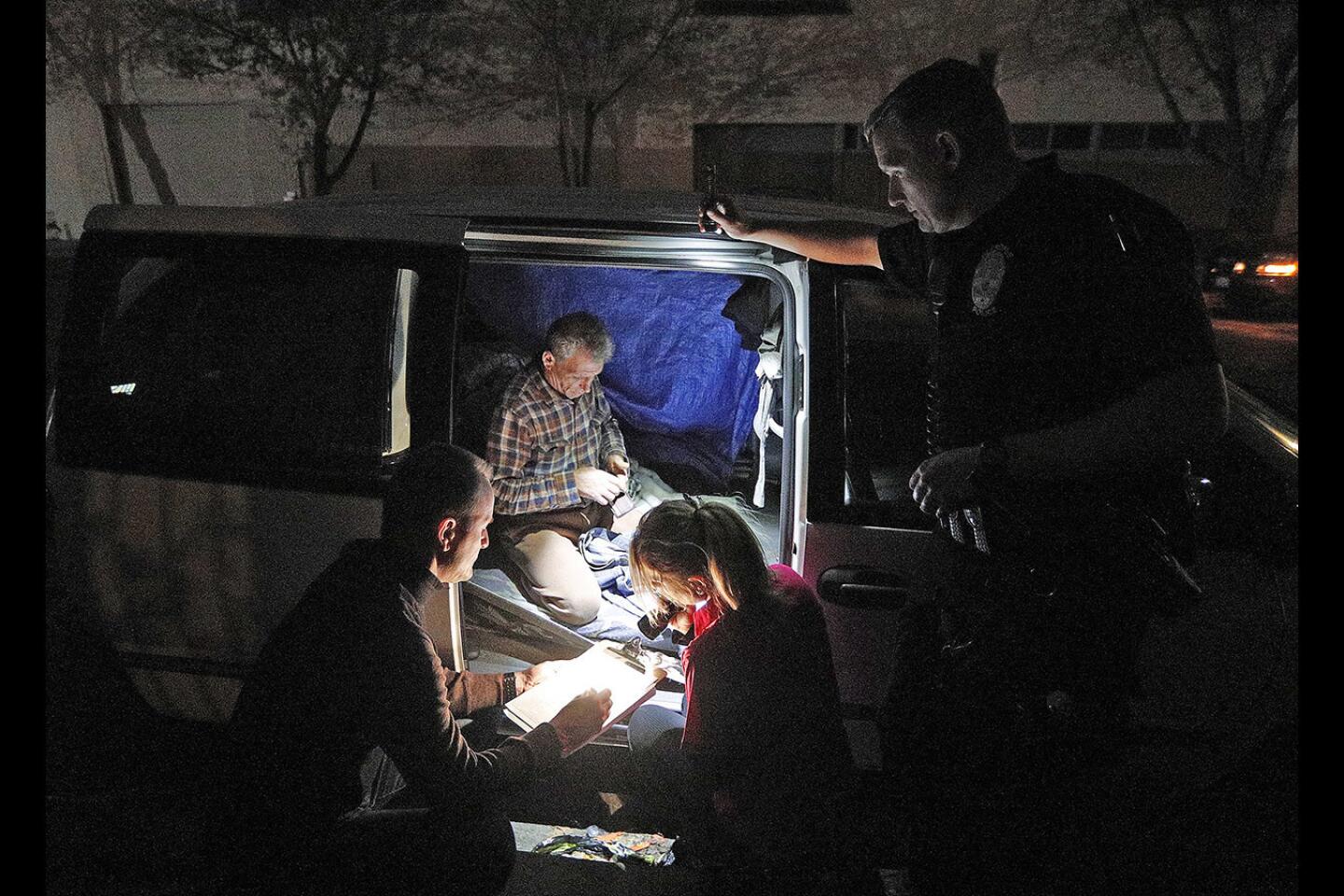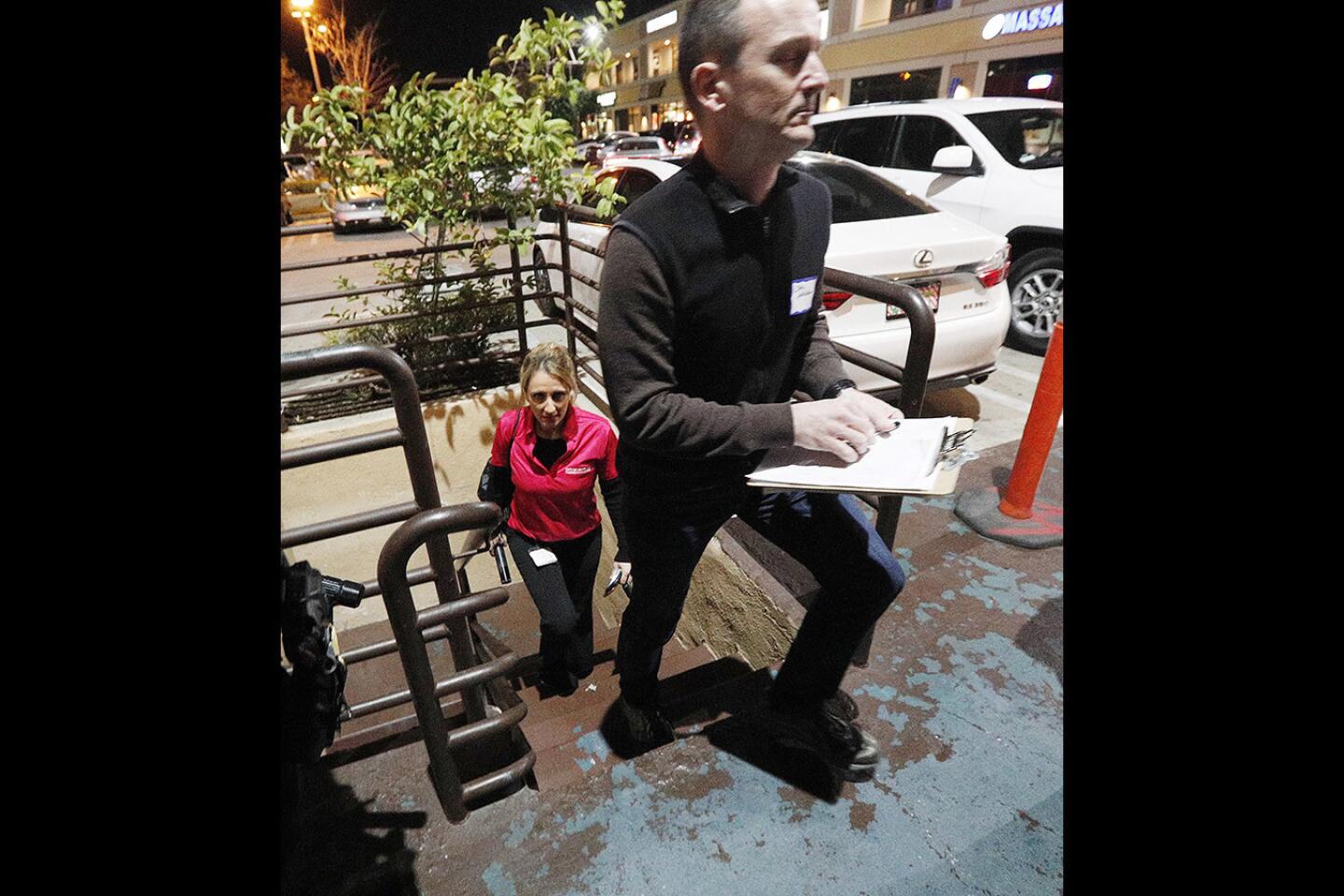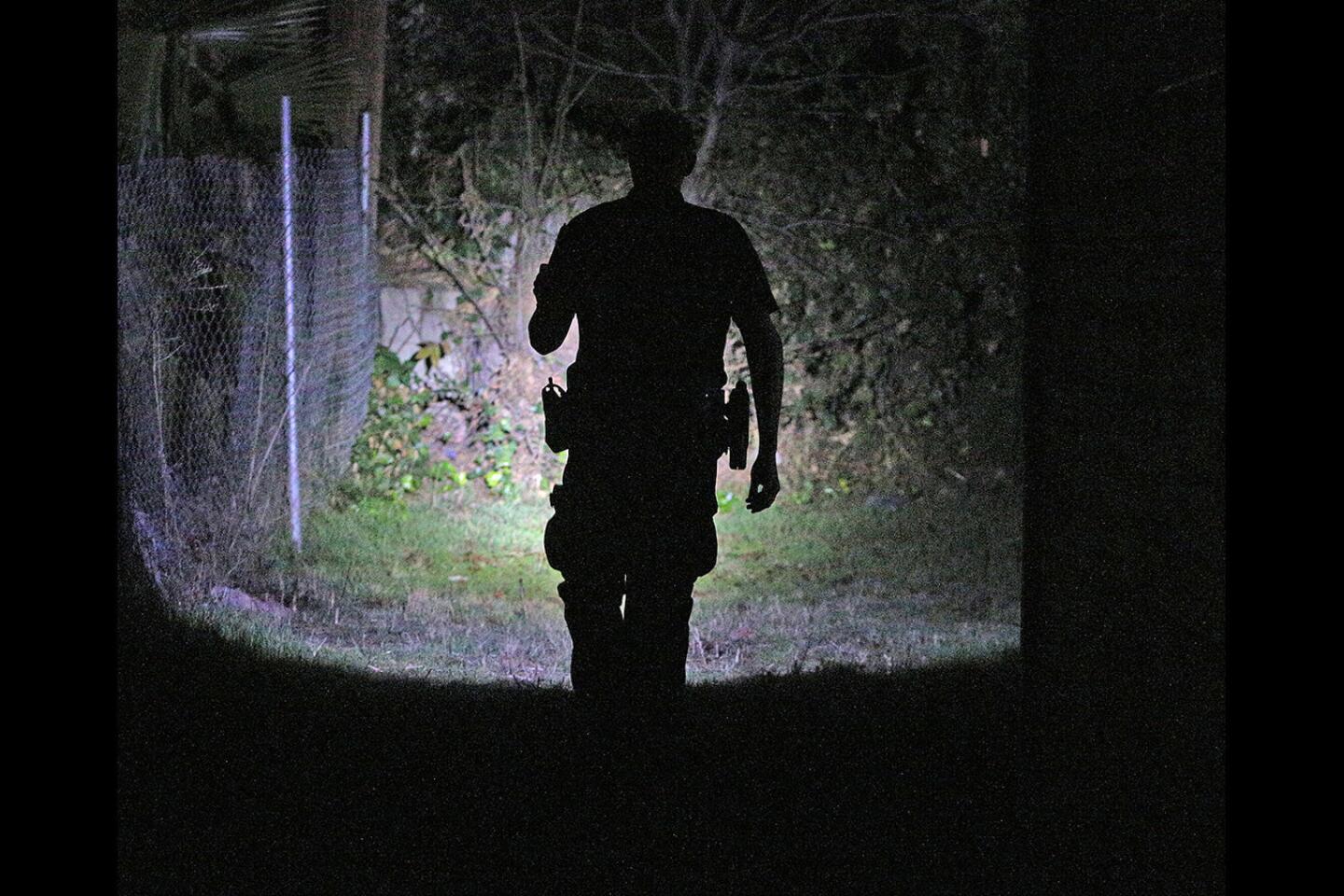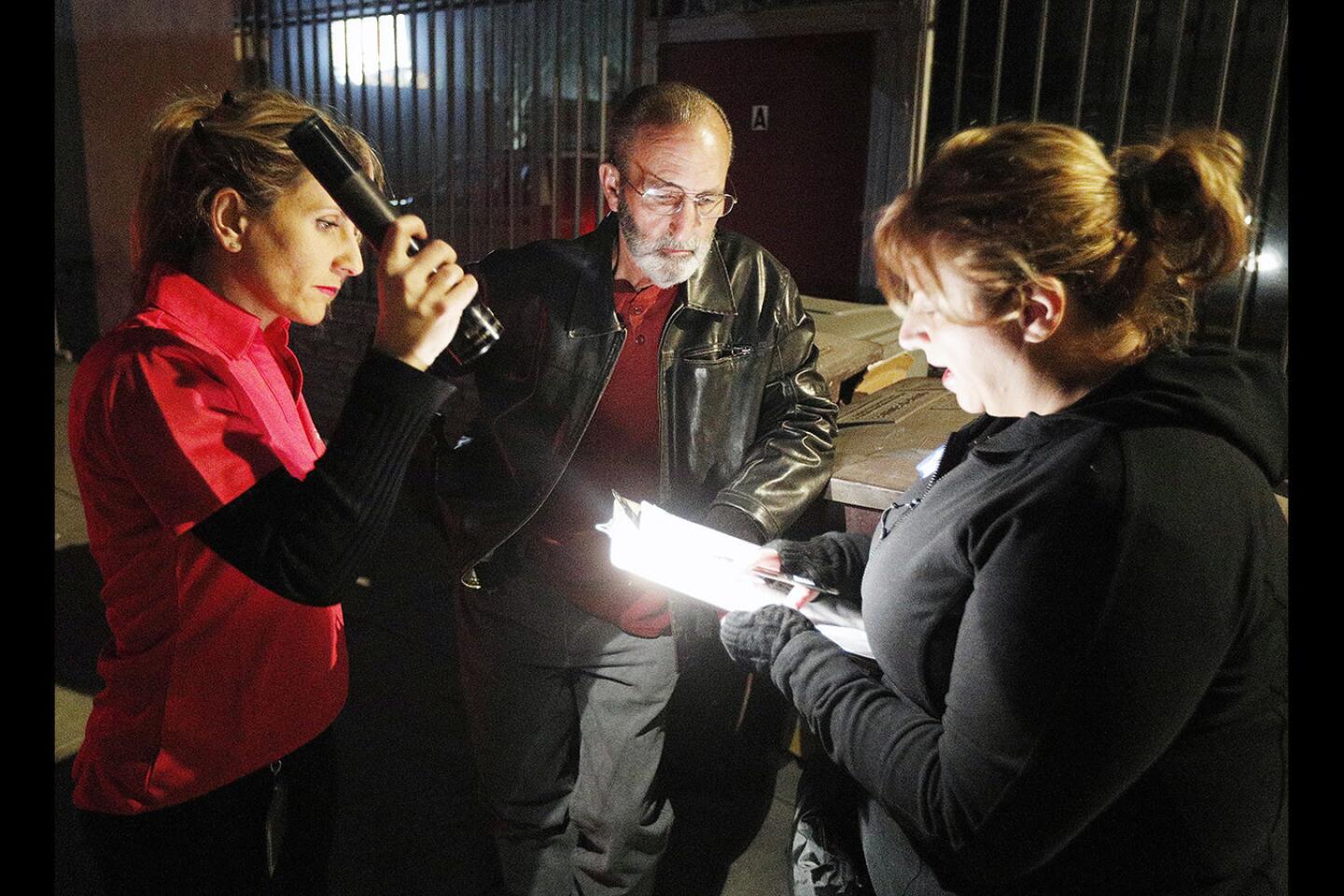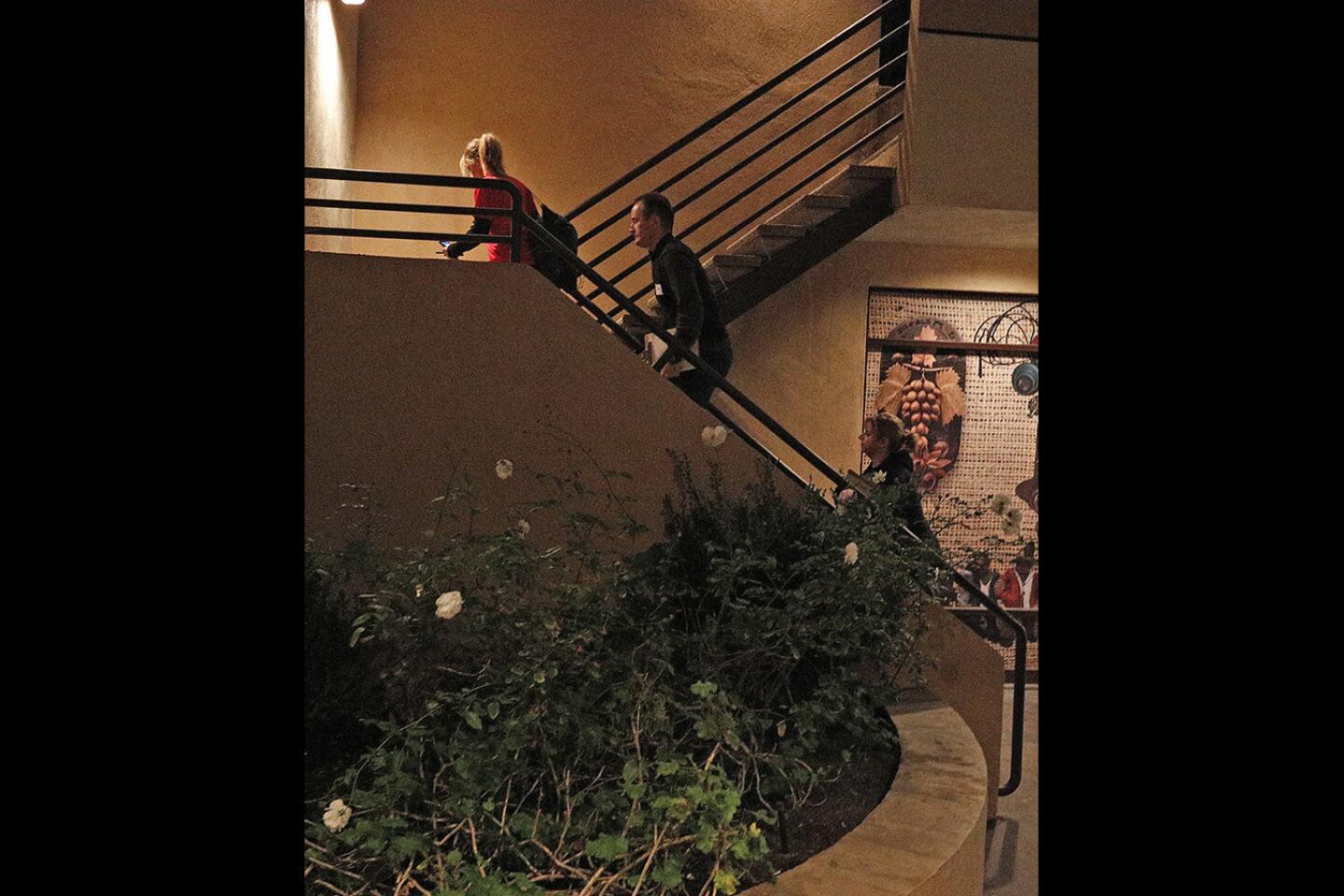‘They want to be seen and heard’: Volunteers help track Glendale’s homeless in annual count
- Share via
About 40 people spent Tuesday evening walking down alleyways and scouring side streets in Glendale in an effort to search for the city’s unsheltered homeless.
Split into teams of five that were each accompanied by an officer from the Glendale Police Department, the mix of volunteers and city employees set out to areas of the city where the homeless are known to congregate. The effort is part of an annual count and survey of the city’s homeless population to give officials an idea of how many are living unsheltered in Glendale, either on the streets or in their cars, and how to better tailor social services.
The count is federally mandated in order for the city to receive funding to help pay for the services, include substance abuse programs, housing vouchers and mental health aid, according to Ivet Samvelyan, Glendale’s community services manager.
One team struck out at the first location they visited, a small shopping center off of Central Avenue and Windsor Road. The center’s owner had taken better care to keep an underground parking structure from being accessed by the homeless than in previous years, according to Steve Koszis, an officer with the Glendale Police Department.
Koszis is assigned as the department’s homeless liaison. One of his responsibilities is to help the homeless population get connected with the city’s available social services.
“Sometimes they need an advocate. Sometimes they need someone to point them in the right direction or open the door again if they feel they burned a bridge at one of the social services,” he said.
He has kept track of all the homeless people he has spoken to since he began in the position about a year ago.
The last time he checked, it was 163.
“Many of the people I’ve talked to I have never seen again,” he said. “But, there is a core group of people who are chronically homeless in the city that I talk to every day.”
Last year’s count found 168 people living on the streets, a 30% drop from 240 people in 2016. Samvelyan said it’ll be weeks before a final tally is available but said she expects a lower number this year.
“Our team worked aggressively to house about 10 chronically homeless people from last year to this year, and we made some progress on that,” she said. “But we also have new homeless clients coming into the city.”
Moving on from the shopping center, the team headed to an industrial park less than a mile away off of San Fernando Road. There, they met George Murray and got to work.
As part of the count, volunteers ask the homeless a series of questions about their background including what year they were born, how long they’ve been homeless, if they’re a veteran and if they became homeless as a result of fleeing domestic violence. The survey is voluntary, and people are free to give as much information as they want.
Murray has been homeless the past two years and two months. The 63-year-old grew up in the Atwater Village area and spent some time in prison several years ago.
Sometime after he got out of prison, he moved into a home in Monrovia with a fiance.
A relapse into a heroin addiction a few years ago caused him to leave all that behind.
“I remember coming here with 80 pounds of stuff ... I was just falling apart,” he said.
Murray has been trying to get back on his feet lately. He’s been sober for a while, looking to get permanent housing and even going to school to become a barber.
The owner of a nearby business had even given him a place to stay but a recent setback forced him and all of his belongings back onto the street, making it nearly impossible for him to look at apartments or attend class.
“It’s getting frustrating. I’m trying to do all I can, and some days, I just feel like not doing it anymore,” he said. “But, there’s a part of me that needs to finish this.”
As the night went on, more people were encountered. Some were happy to answer questions, while others just said they’re passing through.
The team also handed out bags with blankets and sweaters to help people get through the cold night, regardless of their participation in the survey.
Nancy Salem has volunteered in the count the past six years. The Los Feliz resident said it’s not just important to know how many people are living on the streets but to make sure the people being counted know there are those who care for them.
“They are unique people; they’re not just a number,” she said. “They want to be seen and heard.”
Twitter: @Andy_Truc
